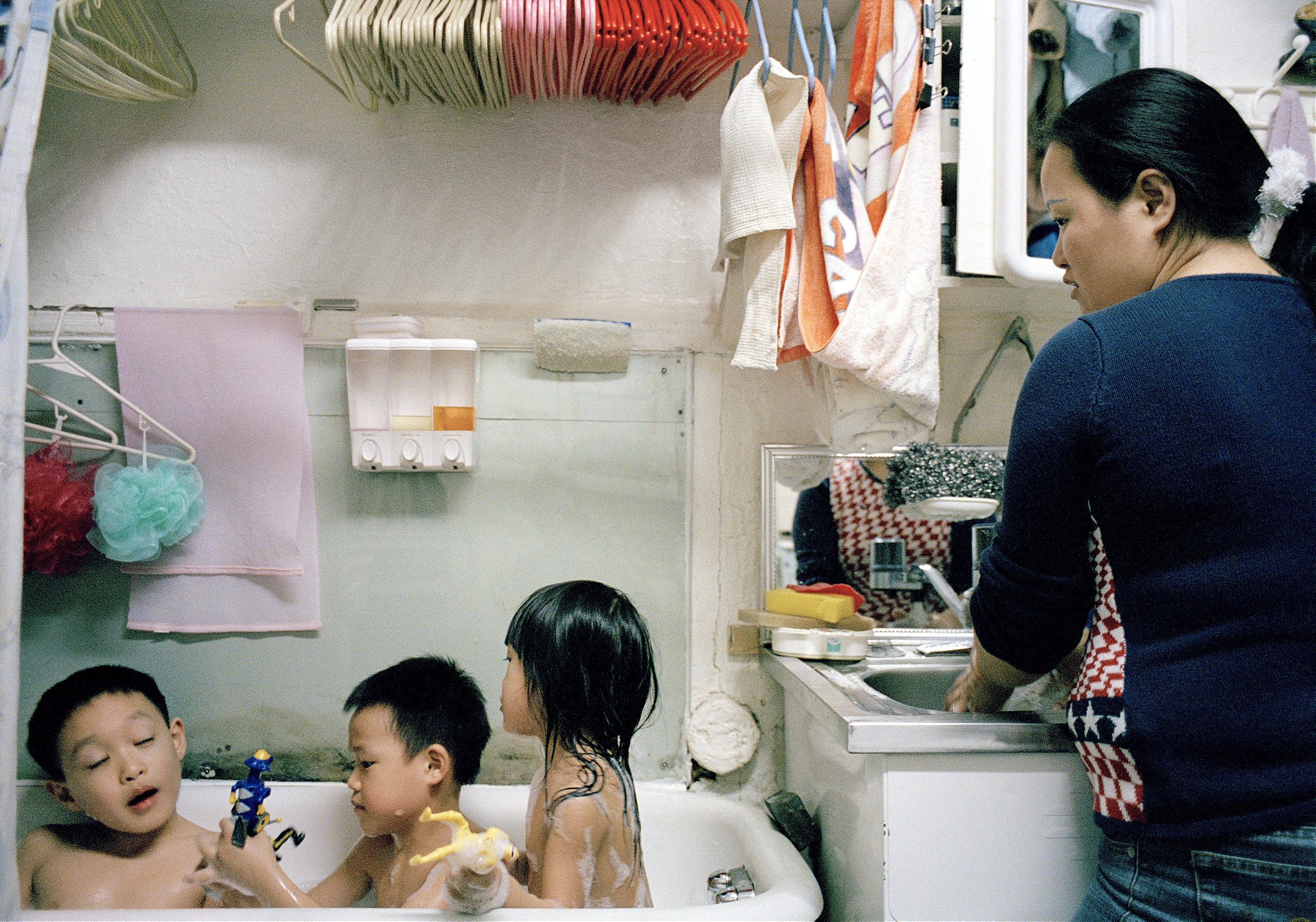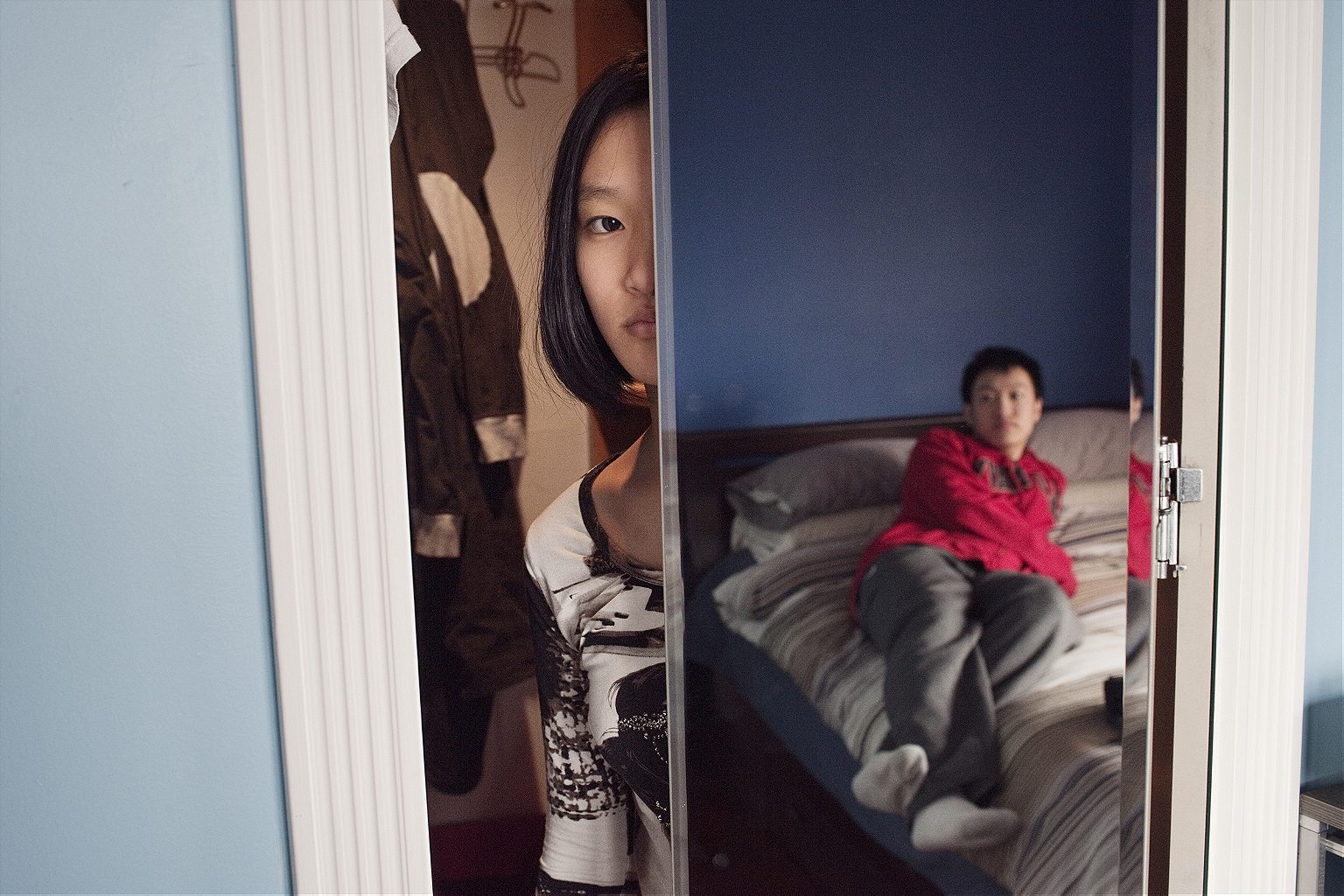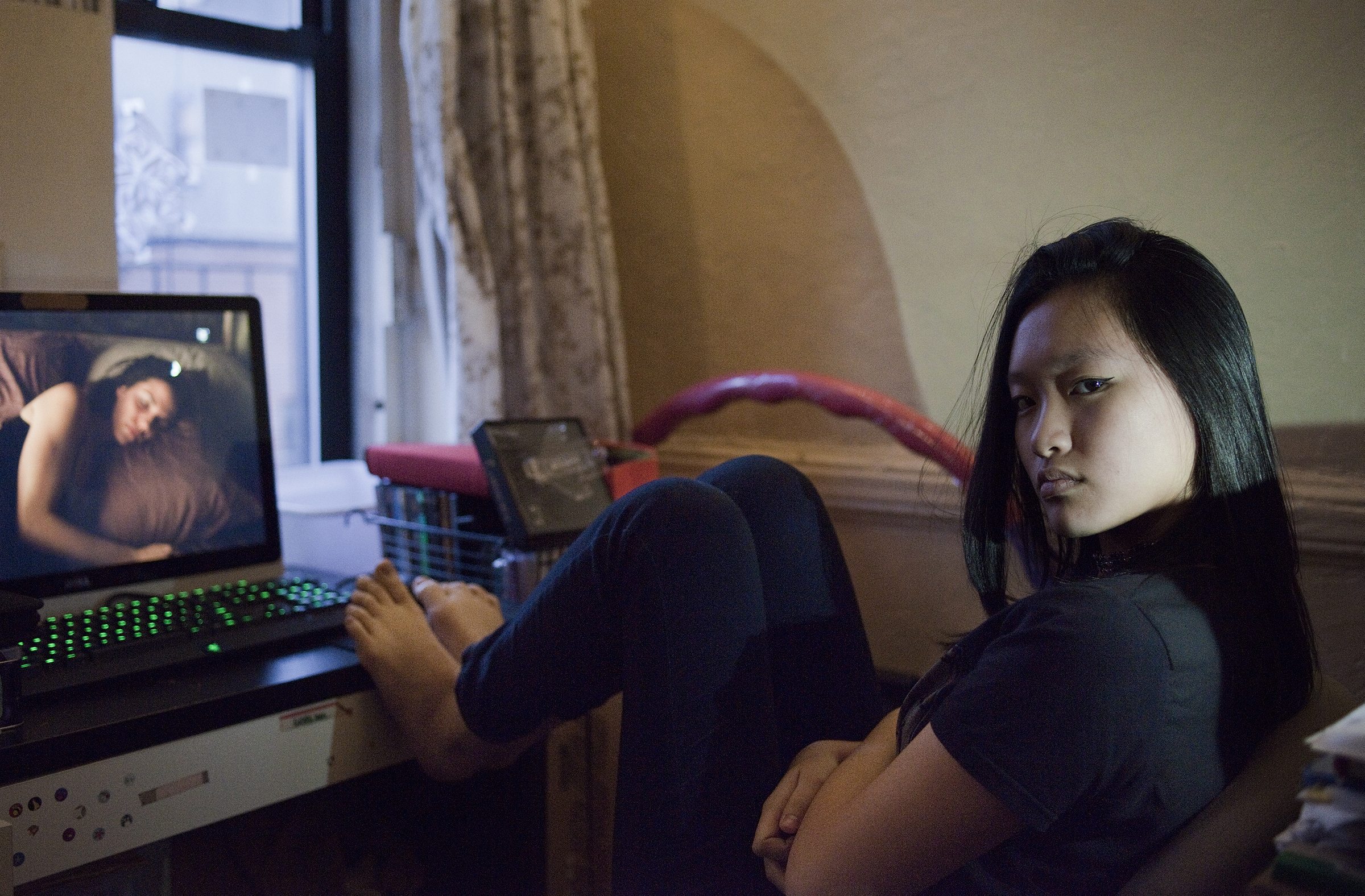A Q&A with photographer Thomas Holton, who has been documenting the same family for nearly two decades.
In their 350-square-foot apartment in 2003 on Ludlow Street in Lower Manhattan, the Lam family pulled up a sixth chair to their dinner table. Their guest was Thomas Holton, a photographer who wanted to document Chinatown’s families behind closed doors. After several failed attempts to find people willing to participate, Holton stumbled upon the Lams. He explains he was initially drawn to their unique living space: three beds pushed together to accommodate their one bedroom, with plastic hangers decorating exposed pipes. Throughout his frequent visits to the family’s home, his photographic approach changed. Eventually, Holton—whose mother is Chinese and father was American—became as much of a fixture in the Lams’ home as the bathtub by the kitchen sink.
Fourteen years later, the family is immortalized in Holton’s project The Lams of Ludlow Street.
Roads and Kingdoms: Tell me about the first time you met the Lams. What was it about them that piqued your interest?
Thomas Holton: I was photographing regularly on the streets of New York City in Chinatown. After getting frustrated from just being on the streets, scratching the surface, I reached out to a housing advocate. Once a week they would walk from one apartment to the next and make sure the families’ issues have been resolved or were being addressed. I went with them and met about a dozen individual families. The times I was there, it was kind of awkward since I was a stranger that would only be there for 20 minutes taking pictures. When I went back to give the families their photos, some people wouldn’t open the door. Others would open the door, I would try to ask in my broken Chinese if I can take more pictures and they would decline or close the door in my face. Then there were the Lams. What made them special was their openness and willingness to let me into their lives. So really, they picked me. When I went back to give them copies of the photographs, Shirley Lam welcomed me in. Then she invited me back the week after and asked me to stay for dinner that same day. The kids were also young at the time so I was also entertainment.

R&K: Initially, you wanted to do a general photo series of families in Chinatown. What changed your mind and made you focus on one family?
Holton: They were the only families that said “come on in.” Their hospitality lead to the close friendship that we have now. My visits became a regular thing and that’s when I started to get glimpses of their life, taking pictures of the kids playing and the mom watching soap operas. At first, I was curious about their small living conditions. Then the narrative deepened the more I came and became interested with them individually. I never thought the project would evolve into this. You just kind of let go, you know?
R&K: How much were the Lams involved in the process? Did they contribute creatively to your vision?
Holton: No not at all. They went about their day and I took pictures. I didn’t always photograph, although I always brought my camera in case something was going on. I was like a relative coming in. Sometimes I’d come over and just play board games with them or watch TV.

R&K: How did you develop your relationship with the Lams over the years?
Holton: At the time, I was in graduate school for photography and it was my Master’s thesis. They encouraged us to come up with a cohesive body of work. So for the first three years, I went once or twice a week for hours on end. At some point, I would go shopping while the mother would pick up the kids. Then she would go shopping and she’d ask me to pick them up. I was on the list of people legally allowed to pick up their kids from school. I kind of became an uncle-babysitter.
The first time I even went to China, briefly, was with them. The Lams went back to Hong Kong and China to visit family whom they hadn’t seen in several years. They simply asked if I wanted to go, so I went. I enjoyed meeting Steven’s parents and his brothers and sisters.

R&K: You’ve mentioned before that the project has bridged the disconnect between you and your Chinese heritage. How so?
Holton: I certainly learned a lot about myself but I’m still not fluent in Chinese at all. But most of what I learned is about family. I learned a lot about the importance of being together. I saw the Lams break up a little bit. Families have different challenges. What I’ve learned is that no one’s life is easily scripted. Every family has ups and downs.
R&K: How did the project change your perspective on New York as a city?
Holton: Their story is an American story about an American family going through life. The project has deepened my love for this place even more. I’ve lived in New York City all my life. I love this city for its diversity. Everything I need creatively and professionally is here. It’s only in New York City I can teach during the day, see the Lams on the weekends, take photographs of people in old ballrooms, then hop on a train to go home to Brooklyn to be with my son.

R&K: What were some of the key moments during the project?
Holton: Unfortunately, one of the key moments was when the parents started splitting up. As a result of the atmosphere being moodier and denser, I was looking for photographs that reflected that. I see the images as reflective of life’s challenges. Then I switched from film to digital. Digital opened up the number of places I could photograph.
When I first met them, they had three beds pushed together. All five of them slept there. When the parents started bickering more, the kids wanted privacy so they started building bunk beds with curtains between each one. The first chapter in the book shows the family all together and the second chapter is when it’s becoming more individualized. I started changing visuals a little bit because I started seeing that also.

R&K: What was your reason behind switching from black and white to color?
Holton: I started with black and white because I was leaning towards a traditional documentary style. Part of my early struggles were I saw six months of black and white and I hit a creative wall. I had plenty of pictures of anything and everything. I switched to color to unclog a creative block and they revealed so much more. All these little things started popping up. Once I did that, I switched to digital and never came back. Digital took the lighting and the color to a more moody level.
R&K: How has Ludlow Street changed over the course of the project?
Holton: It’s definitely changing. Two blocks from their apartment, there’s a photo gallery. And sadly, from what I heard from the landlord, I think their years are numbered at Ludlow. They’re the only ones on the top floor. Three other apartments were being renovated by the landlord. He’s fixing them up and there are certainly a lot more vacancies. I heard the landlord sold the building to someone else. People have been leaving. Neighbors are gone. The Lams have not been able to extend their lease beyond one or two years. It has definitely been challenging for them. It’s rather unclear what is exactly happening. It’s kind of up in the air how long they’ll remain at Ludlow.
R&K: When is the last time you saw the Lams?
Holton: I see them every weekend. The little girl, Cindy, is my main focus now since she’s the only one that’s around. I took her out to dinner last week and hung out with the family.

R&K: What are they up to?
Holton: The father, Steven, lives and works in New Jersey. The mother, Shirley, is a caretaker on Henry Street for an 85-year-old man whose mother she also took care of. She takes care of this guy six hours a day, so she’s not making much money. The older boy, Michael, is doing pretty well as a junior in college at CUNY Binghamton. The second boy, Franklin, is still figuring it out. Cindy is a junior in high school. She wants to go to college but she doesn’t know if it’s worth it to spend all that money and she doesn’t exactly know what she wants to do.
As for me, I’m not photographing as urgently. Just kind of letting time go by. But I have been photographing this ballroom dancing place, every three weeks, for about a year now. Sometimes I take periodic pauses with the Lams, since I always see them, until I feel like some kind of story or some kind of narrative pops up that’s different. While I still bring my camera, I’m waiting for something else to show up.